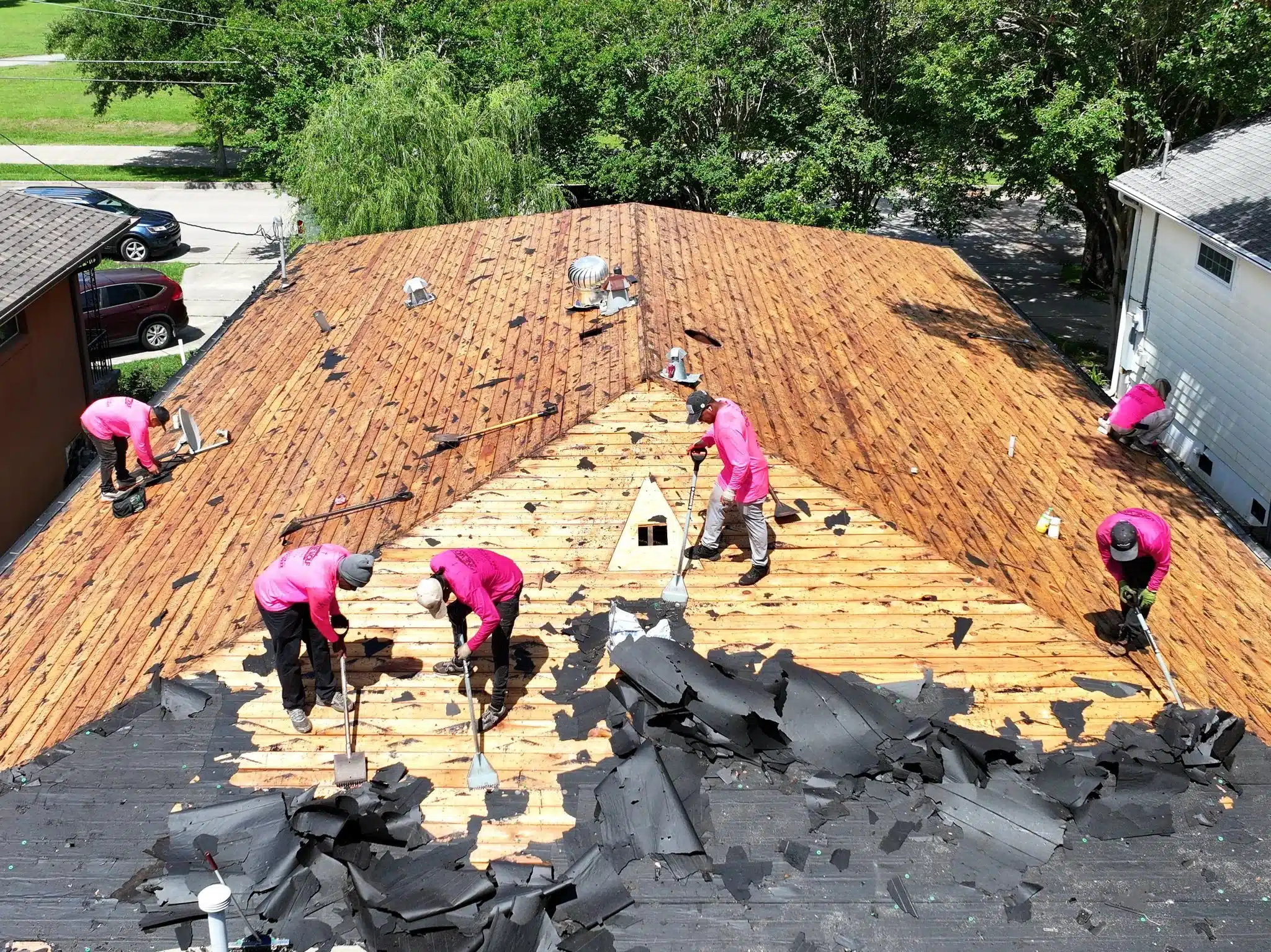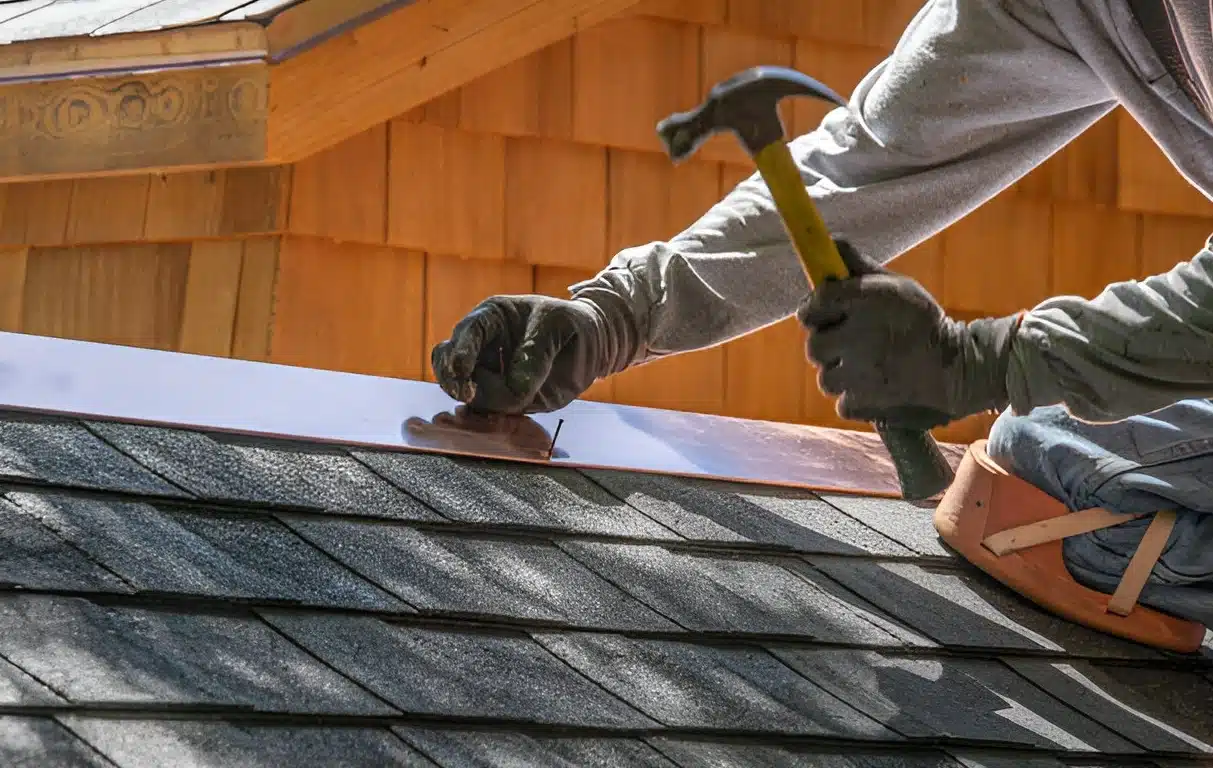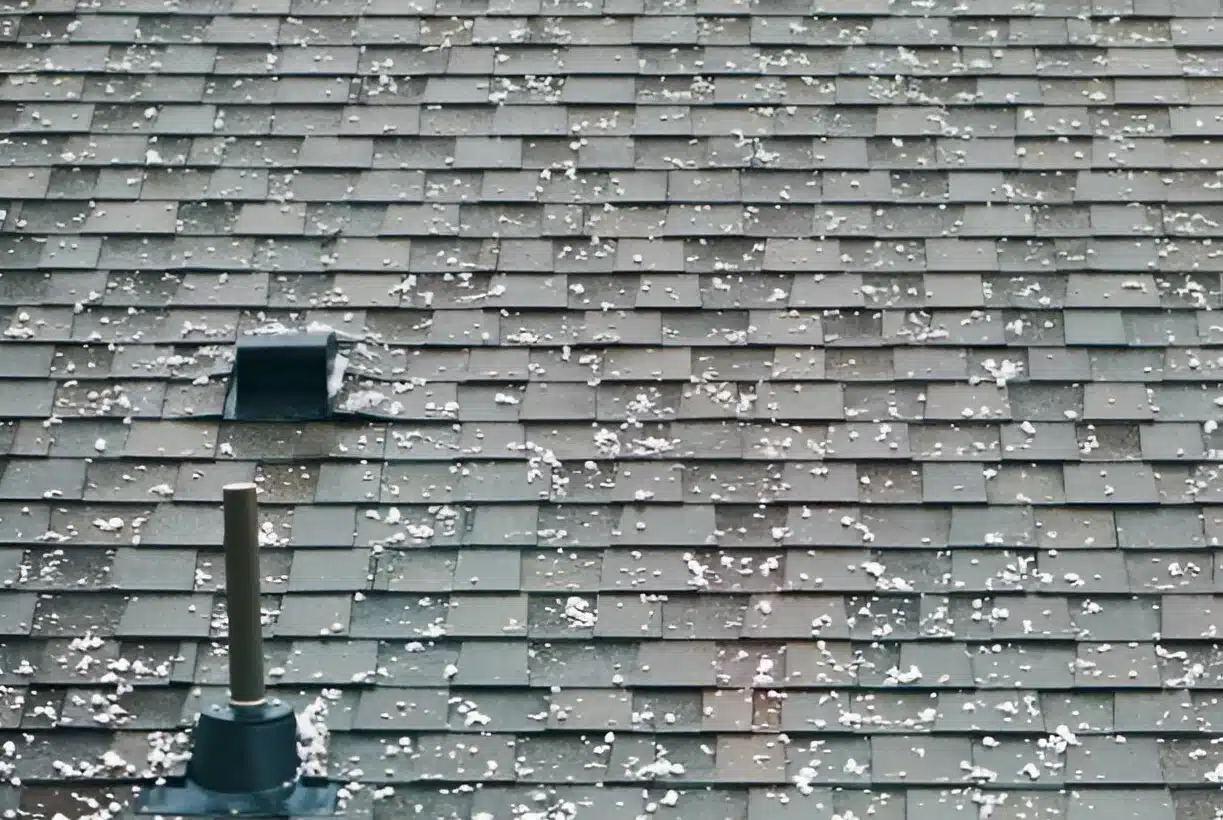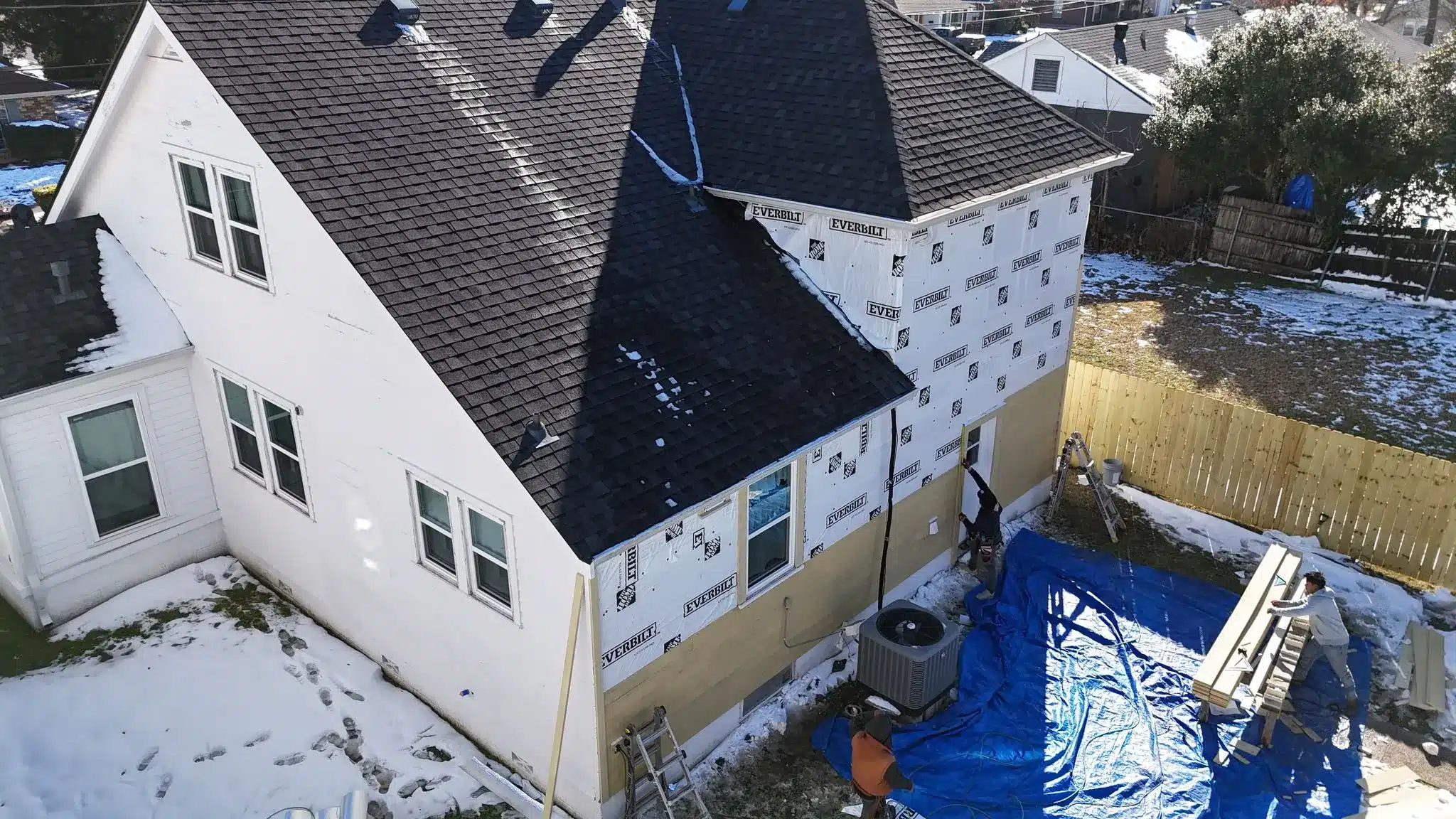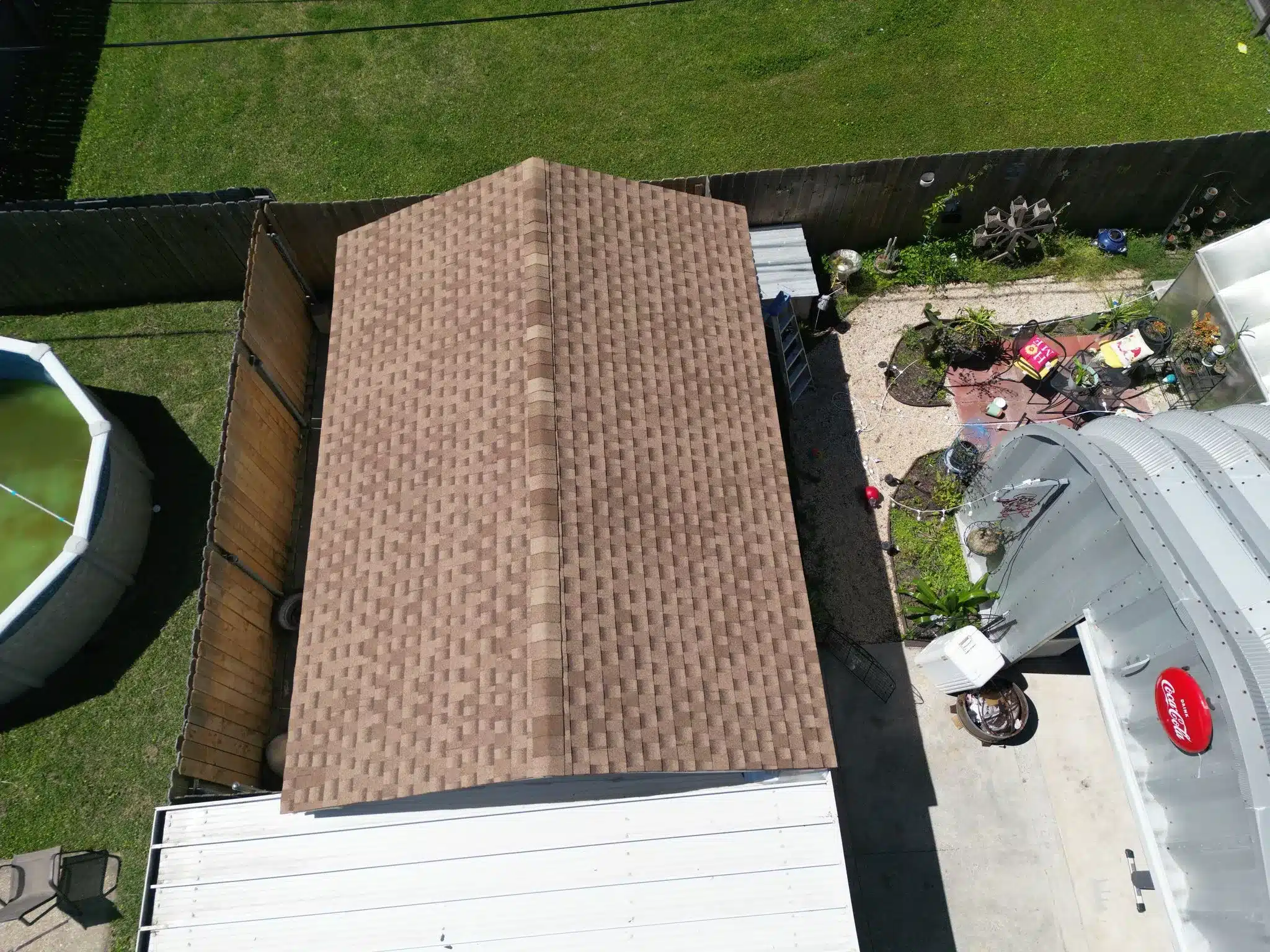When your roof is damaged by a storm, fallen debris, or age-related wear, it can feel overwhelming to figure out what to do first. A common question homeowners ask is: do I contact insurance first or contact a roofing company? Making the right call early in the process can save you time, money, and headaches down the line.
In this guide, we’ll walk you through the proper steps to take after roof damage, help you understand the roof insurance claim process, and explain why a roofing inspection before insurance might be your best first move.
The First Step After Roof Storm Damage: Stay Safe and Assess
The moment you notice roof damage, safety should be your priority. If shingles are missing, water is leaking, or you see structural issues, take steps to protect your home and family:
- Avoid areas where debris could fall or where water may be entering
- Place buckets or tarps to prevent interior water damage
- Do not attempt to climb on the roof yourself
Once immediate safety is addressed, begin documenting the damage. Take clear photos and videos from the ground showing any visible damage to your roof, siding, windows, or surrounding property. This documentation will support your insurance claim and help roofing professionals assess the situation.
Also, take note of the date the damage occurred, as insurance providers will ask for this when filing a claim. If the damage is the result of a known weather event—like a hailstorm or hurricane—locating news reports or weather alerts from that day can strengthen your case.
Should I Contact a Roofer or My Insurance Company First?
The short answer: Call a trusted roofing company first. Here’s why:
1. Roofing Inspection Before Insurance
A reputable roofing contractor can perform a free inspection and provide detailed documentation of the damage before the insurance adjuster arrives. This ensures you have an expert opinion on your side and may help avoid denied or underpaid claims.
A roofer will:
- Assess the full extent of the damage
- Provide a written estimate
- Take detailed photos
- Point out hidden damage that adjusters might miss
- Offer temporary solutions like tarping to prevent further damage
Getting this done early allows you to enter the insurance process well-informed and with a professional advocate on your side.
Explore our roof inspection services to get started.
2. Insurance Adjusters Are Not Roofing Experts
While adjusters are trained in property assessments, they may not have the same knowledge as a licensed roofer. Some damage—such as lifted shingles, granule loss, or damage to underlayment—may not be visible from a simple ground inspection or might be underestimated in severity.
Having a roofing expert identify and point out these issues increases your chances of receiving full coverage. It’s not uncommon for initial adjuster reports to miss critical areas that only a trained roofer would catch.
3. Roofing Contractors Can Assist With the Insurance Claim Process
Experienced roofing companies like Lone Wolf Roofing help homeowners navigate the entire roof insurance claim process, from inspection to documentation and negotiation. That guidance can prevent costly errors or delays.
Many roofing companies are familiar with local insurance providers and understand how to present findings in a way that aligns with what insurers need. This not only speeds up the process but can also increase the value of your approved claim.
How to File a Roof Insurance Claim the Right Way
If your roofer confirms there’s enough damage to warrant a claim, here’s how to move forward:
- Review Your Policy: Understand your coverage, deductible, and any exclusions (especially for older roofs). If you’re unsure about coverage limits, check out our guide: will insurance cover a 20-year-old roof.
- File the Claim Promptly: Contact your insurance provider and provide your roofer’s documentation. Be clear, concise, and provide photos and estimates.
- Schedule an Adjuster Visit: Coordinate with your roofing contractor so they can be present during the inspection. Their input can help clarify technical details.
- Get Repair Estimates: Even if your insurer recommends preferred contractors, you’re entitled to your own quotes. Getting an independent estimate helps you ensure pricing and scope align with industry standards.
- Approve the Scope of Work: Once your claim is approved, work with your roofer to schedule repairs. Many roofing companies will also help with temporary repairs to prevent further damage in the meantime.
Pro Tip:
Keep records of every interaction with your insurer, including phone calls, emails, and receipts for emergency repairs or accommodations.
Why Roofing Documentation Matters for Your Insurance Claim
Solid documentation is crucial for maximizing your claim. Your roofing contractor should:
- Provide photos from multiple angles
- Include a full written assessment
- Identify wind, hail, water, or structural damage
- Include date-stamped files to align with the storm event
This documentation creates a trail of evidence that supports your claim. In some cases, homeowners have had their claims denied initially, only to succeed after submitting proper documentation through a roofing professional.
Additionally, some insurance companies may require proof that the damage was not due to neglect or pre-existing wear. Timely, thorough records provided by a roofer help distinguish storm damage from regular aging.
Insurance Adjuster vs. Roofing Contractor: Who to Trust?
It’s important to understand the roles of each:
- Insurance Adjuster: Works for the insurance company. Their goal is to assess damage based on policy limitations. They may be incentivized to minimize payouts.
- Roofing Contractor: Works for you. Their priority is to ensure your roof is repaired correctly and that you receive the full value of your claim.
While both professionals are important in the claims process, your roofer is your advocate. Reputable roofing companies often have experience working with insurance and can identify underreported issues that may be missed by an adjuster alone.
Roofers can also negotiate with insurance companies or provide supplemental reports if the initial claim is insufficient. This second opinion often makes the difference between a partial repair and full roof replacement.
Summary: What You Should Do First After Roof Damage
When you’re faced with a damaged roof, it’s critical to act fast and smart:
- Document the damage with photos and videos
- Call a roofing company first for an inspection
- Let the roofer assist in the roof insurance claim process
- File the claim with your insurer using professional documentation
- Stay involved throughout the adjuster’s visit and approval stages
Taking these steps ensures that your roof is repaired properly, and your claim is processed efficiently.
For help every step of the way, Contact us for a free inspection and insurance assistance.
Frequently Asked Questions
Should I get a roof inspection before calling insurance?
Yes. A roof inspection before insurance gives you leverage and ensures all damage is documented properly. It helps avoid surprises during the adjuster’s visit and can increase your chances of claim approval.
What should I do first after roof storm damage?
- Stay safe
- Document the damage
- Call a roofing professional for an inspection
- Avoid DIY repairs until your claim is filed
These steps will protect your property and improve your claim outcome.
Will insurance cover a roofing inspection?
Many roofing contractors offer free inspections after storm damage. Insurance usually doesn’t reimburse you for inspections unless it’s part of a covered repair. Always ask upfront.
Can a roofer help with insurance claims?
Absolutely. A reputable roofing company can:
- Provide detailed documentation
- Communicate with your adjuster
- Help you understand your policy
- Ensure all damage is accounted for
Check out our Lone Wolf Roofing insurance claims assistance for expert support.
Need help with your roof damage? Contact us for a free inspection and insurance assistance to protect your home and secure your claim.
Additional Resources:

